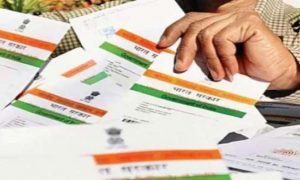It started out as an ordinary day at work until I received an unexpected call from an unfamiliar number. On the line was a man who seemed keen on establishing a connection. Right from the start, he addressed me as “beti”, sort of patronising me and trying to establish a connection where I would be deferential towards him. He didn’t inquire about my name or profession — a big mistake — nor did he introduce himself. Minutes into the call he created a big ruse and tried to coax me into sending him Rs 27,000 through PhonePe.
From the moment he said hello and said “aapke papa ne bola hai ki aapke account mein paise dalne hain”( Your father has asked me to transfer money in your Google Pay account) I got suspicious. I turned on the speaker on the phone, opened a recorder app on a colleague’s phone and went about figuring out how scammers are nowadays stealing money from Indians with just one call. The call lasted around 10 minutes and ended when the scammer realised that he was not going to succeed. But in those 10 minutes the modus operandi of these scammers became clear not just to me but to the entire India Today Tech team which gathered around my workstation to hear the story the scammer — he called himself Anil Sharma from LIC office in Uttam Nagar, Delhi — was weaving.
Anil Sharma — this is probably fake name that scammer was using — began the conversation by saying that my father asked him to transfer Rs 13,000 to my Google Pay account. For me, this immediately turned the man into a scammer because dad had passed away last year.
I quickly put the phone on speaker mode and asked my colleague sitting right next to me to record the conversation. I asked Sharma to repeat what he said to me in the beginning of the conversation. Believing that I was snared, Sharma gleefully and seriously repeated his tale.
Claiming to be Anil Sharma from LIC, Uttam Nagar, the man wanted to confirm my number linked to Google Pay. However, I convinced him that the number he was using was not linked to any UPI apps. Instead, I gave him a separate number which was not really linked to any UPI apps. Astonishingly, the man did not try to verify the second number. Instead, he said that he would transfer Rs 10,000 initially to me, followed by Rs 3000. The reason why the transaction was supposed to happen in two transfers: Sharma said “he had a glitch” in his PhonePe app.
Seconds later, Sharma urged me to check my PhonePe account, claiming he had already sent the money. It seemed too quick, faster than the time anyone would typically take to enter details and confirm a payment. Most apps, no matter how swift, usually take a moment to process transactions. Yet, the man asserted that the money had been sent. I informed him of not receiving any payment and managed to persuade him to send screenshots via WhatsApp.
Read More: TCS sends transfer letters to employees; can return to work lead to higher attrition?
Initially hesitant, Sharma eventually gave in and shared the screenshots. They were obviously fake but it is a testament to his skills as a scammer that he managed to create such a screenshot so quickly, while at the same time continuing the call with his supposed victim. What made these screenshots highly convincing was the accurate spelling of my name, a detail often mistaken even by reliable sources. Though the screenshots contained a lengthy transaction ID, they seemed otherwise plausible.
Now, came the part where I was supposed to transfer him money. With an air of generosity and warmth, Sharma told me that he mistakenly transferred Rs 30,000 into my PhonePe account instead of Rs 3,000. Then he insisted that I refund him Rs 27,000.
The entire conversation stretched on for a good ten minutes, building up to the pivotal moment. Sharma pressed me to promptly refund him Rs 27,000 via his Google Pay account. It was my turn to play a role in this charade. I claimed that my phone’s keypad malfunctioned, preventing me from entering numbers into the Google Pay app. This, however, was enough for the experienced scammer to realise that I wasn’t falling for his scheme.
He promptly accused me of deceit. Surprisingly, instead of displaying angst or anger, Sharma chuckled it off. Curious, I asked him how he managed to craft such authentic-looking PhonePe screenshots within minutes. In a joking manner, he admitted to his ability to create such screenshots and more, before abruptly ending the call.
This incident isn’t an isolated case. Every day, thousands of Indians fall victim to scammers who have an uncanny ability to sound utterly convincing. These scammers, as my case here shows, also have a lot of accurate personal information about their prospective victims.
Read More: The creator economy is a $250 billion industry and it’s here to stay
These scammers specifically target vulnerable users who are more susceptible to these schemes. Among their many skills, scammers excel at making things believable. They not only present a convincing narrative but also fabricate materials that appear genuine, such as those PhonePe screenshots.



































